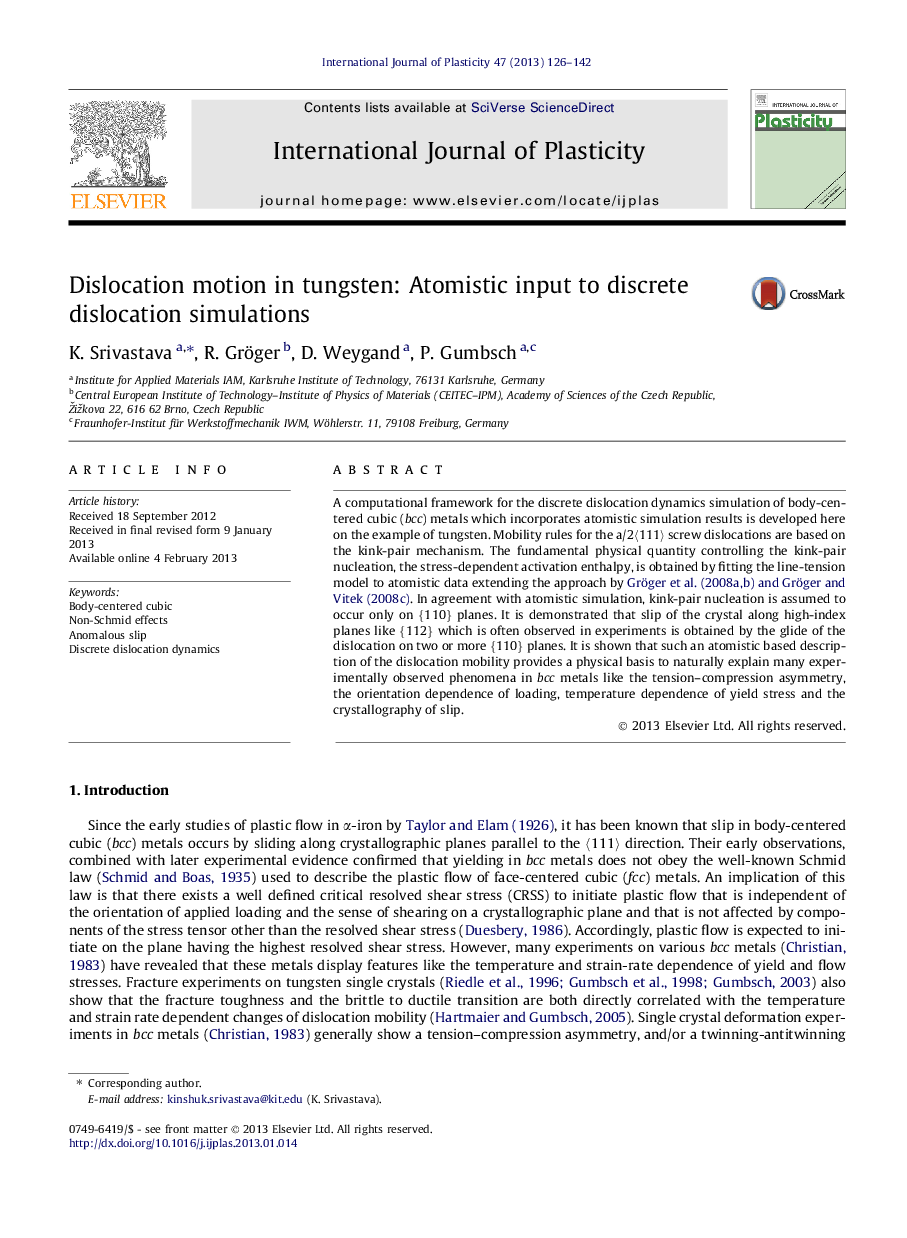| Article ID | Journal | Published Year | Pages | File Type |
|---|---|---|---|---|
| 786232 | International Journal of Plasticity | 2013 | 17 Pages |
A computational framework for the discrete dislocation dynamics simulation of body-centered cubic (bcc ) metals which incorporates atomistic simulation results is developed here on the example of tungsten. Mobility rules for the a/2〈111〉〈111〉 screw dislocations are based on the kink-pair mechanism. The fundamental physical quantity controlling the kink-pair nucleation, the stress-dependent activation enthalpy, is obtained by fitting the line-tension model to atomistic data extending the approach by Gröger et al., 2008a, Gröger et al., 2008b and Gröger and Vitek, 2008c. In agreement with atomistic simulation, kink-pair nucleation is assumed to occur only on {110}{110} planes. It is demonstrated that slip of the crystal along high-index planes like {112}{112} which is often observed in experiments is obtained by the glide of the dislocation on two or more {110}{110} planes. It is shown that such an atomistic based description of the dislocation mobility provides a physical basis to naturally explain many experimentally observed phenomena in bcc metals like the tension–compression asymmetry, the orientation dependence of loading, temperature dependence of yield stress and the crystallography of slip.
► Framework incorporates atomistic results on screw dislocation mobility into discrete dislocation dynamics for bcc metals. ► Mobility rules include the role of non-glide components of stress tensor (non-Schmid effects) on plastic flow. ► The model shows that the activation of a FR-source under tension and compression can occur on different glide planes. ► Many experimentally observed phenomena can be described within this framework: e.g. wavy slip, anomalous slip. ► Possible origin of discrepancy of Peierls stress between atomistics and experiments is discussed.
